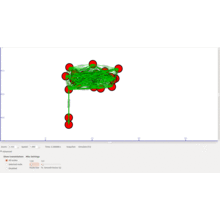How to Begin Implementing a VANET Projects Using NS3
To start executing a Vehicular Ad-Hoc Network (VANET) project utilising NS3 that encompasses to replicate the interaction among vehicles and infrastructure, which concentrate on mobility, routing, and performance parameters. Here’s a comprehensive mechanism to get started with VANET project:
Steps to Begin Implementing a VANET Projects in NS3
Step 1: Understand VANET Concepts
- What is VANET?
- VANET (Vehicular Ad-Hoc Network) allows interaction among the vehicles (V2V) and between vehicles and infrastructure (V2I).
- Key Technologies:
- 802.11p (WAVE): It has dedicated Short-Range Communications (DSRC) for V2X communication.
- Routing Protocols: AODV, DSR, or VANET-specific routing protocols.
- Mobility Models: Replicate the realistic vehicular movement.
- Use Cases:
- Autonomous vehicle coordination.
- Traffic management.
- Collision avoidance.
Step 2: Install and Configure ns3
- Download ns3:
- We must install and download the new version of NS3 on the machine.
- Enable Necessary Modules:
- Make sure that essential components like wifi, wave, mobility, and internet modules are allowed:
./waf configure –enable-modules=wave,wifi,mobility,point-to-point,internet
./waf build
- Verify Installation:
- Execute an example script for confirming the installation:
./waf –run wave-simple
Step 3: Define the Project Scope
- Scenario:
- V2V communication occurs within urban or highway settings.
- V2I communication including roadside units (RSUs).
- Metrics:
- Throughput, latency, packet delivery ratio, routing overhead are performance parameters.
- Applications:
- Safety messages, multimedia streaming, or navigation assistance.
Step 4: Set Up Network Topology
- Create Nodes:
- Describe the nodes with vehicles and roadside units:
NodeContainer vehicles, rsus;
vehicles.Create(10); // 10 vehicles
rsus.Create(2); // 2 roadside units
- Set Up Mobility:
- Set up realistic vehicle mobility model:
MobilityHelper mobility;
mobility.SetMobilityModel(“ns3::ConstantVelocityMobilityModel”);
mobility.Install(vehicles);
for (uint32_t i = 0; i < vehicles.GetN(); ++i) {
Ptr<ConstantVelocityMobilityModel> cvmm = vehicles.Get(i)->GetObject<ConstantVelocityMobilityModel>();
cvmm->SetPosition(Vector(i * 10.0, 0.0, 0.0));
cvmm->SetVelocity(Vector(20.0, 0.0, 0.0)); // Speed: 20 m/s
}
mobility.SetMobilityModel(“ns3::ConstantPositionMobilityModel”);
mobility.Install(rsus);
Step 5: Configure VANET Communication
- 802.11p (WAVE):
- Configure WAVE devices for V2X communication:
YansWifiChannelHelper waveChannel = YansWifiChannelHelper::Default();
YansWavePhyHelper wavePhy = YansWavePhyHelper::Default();
wavePhy.SetChannel(waveChannel.Create());
QosWaveMacHelper waveMac = QosWaveMacHelper::Default();
WaveHelper waveHelper = WaveHelper::Default();
NetDeviceContainer vehicleDevices = waveHelper.Install(wavePhy, waveMac, vehicles);
NetDeviceContainer rsuDevices = waveHelper.Install(wavePhy, waveMac, rsus);
- Routing Protocols:
- We can set up a routing protocol such as AODV, DSDV:
AodvHelper aodv;
InternetStackHelper stack;
stack.SetRoutingHelper(aodv);
stack.Install(vehicles);
stack.Install(rsus);
- Assign IP Addresses:
- Set up IP addressing:
Ipv4AddressHelper ipv4;
ipv4.SetBase(“10.1.1.0”, “255.255.255.0”);
ipv4.Assign(vehicleDevices);
ipv4.Assign(rsuDevices);
Step 6: Add VANET Applications
- Broadcast Safety Messages:
- Make use of WaveNetDevice for transmitting safety messages:
ApplicationContainer safetyApps;
WaveBsmHelper waveBsm;
waveBsm.Install(vehicleDevices, Seconds(1.0), Seconds(10.0), 50, “10.1.1.255”, 80);
- Traffic Applications:
- Integrate the unicast or multicast traffic applications:
UdpEchoServerHelper echoServer(9);
ApplicationContainer serverApp = echoServer.Install(rsus.Get(0));
serverApp.Start(Seconds(1.0));
serverApp.Stop(Seconds(10.0));
UdpEchoClientHelper echoClient(Ipv4Address(“10.1.1.1”), 9);
echoClient.SetAttribute(“MaxPackets”, UintegerValue(100));
echoClient.SetAttribute(“Interval”, TimeValue(Seconds(1.0)));
echoClient.SetAttribute(“PacketSize”, UintegerValue(1024));
ApplicationContainer clientApp = echoClient.Install(vehicles.Get(0));
clientApp.Start(Seconds(2.0));
clientApp.Stop(Seconds(10.0));
- Custom Applications:
- Prolong the custom Application for executing custom VANET logic.
Step 7: Enable Tracing and Monitoring
- Enable PCAP Tracing:
- Seizure packets to debug:
wavePhy.EnablePcap(“vanet”, vehicleDevices.Get(0));
- FlowMonitor:
- Accumulate performance indicators utilising FlowMonitor:
FlowMonitorHelper flowMonitor;
Ptr<FlowMonitor> monitor = flowMonitor.InstallAll();
Step 8: Run the Simulation
- Schedule Simulation:
- Describe the simulation duration and execute the simulation:
Simulator::Stop(Seconds(10.0));
Simulator::Run();
Simulator::Destroy();
- Analyze Results:
- Make use of trace files or FlowMonitor output for performance estimation.
Step 9: Example: Simple VANET Simulation
Below is an instance script for VANET simulation:
#include “ns3/core-module.h”
#include “ns3/network-module.h”
#include “ns3/mobility-module.h”
#include “ns3/internet-module.h”
#include “ns3/wave-module.h”
#include “ns3/applications-module.h”
using namespace ns3;
int main(int argc, char *argv[]) {
NodeContainer vehicles, rsus;
vehicles.Create(10);
rsus.Create(2);
MobilityHelper mobility;
mobility.SetMobilityModel(“ns3::ConstantVelocityMobilityModel”);
mobility.Install(vehicles);
for (uint32_t i = 0; i < vehicles.GetN(); ++i) {
Ptr<ConstantVelocityMobilityModel> cvmm = vehicles.Get(i)->GetObject<ConstantVelocityMobilityModel>();
cvmm->SetPosition(Vector(i * 10.0, 0.0, 0.0));
cvmm->SetVelocity(Vector(20.0, 0.0, 0.0));
}
mobility.SetMobilityModel(“ns3::ConstantPositionMobilityModel”);
mobility.Install(rsus);
YansWifiChannelHelper waveChannel = YansWifiChannelHelper::Default();
YansWavePhyHelper wavePhy = YansWavePhyHelper::Default();
wavePhy.SetChannel(waveChannel.Create());
QosWaveMacHelper waveMac = QosWaveMacHelper::Default();
WaveHelper waveHelper = WaveHelper::Default();
NetDeviceContainer vehicleDevices = waveHelper.Install(wavePhy, waveMac, vehicles);
NetDeviceContainer rsuDevices = waveHelper.Install(wavePhy, waveMac, rsus);
InternetStackHelper stack;
stack.Install(vehicles);
stack.Install(rsus);
Ipv4AddressHelper ipv4;
ipv4.SetBase(“10.1.1.0”, “255.255.255.0”);
ipv4.Assign(vehicleDevices);
ipv4.Assign(rsuDevices);
UdpEchoServerHelper echoServer(9);
ApplicationContainer serverApp = echoServer.Install(rsus.Get(0));
serverApp.Start(Seconds(1.0));
serverApp.Stop(Seconds(10.0));
UdpEchoClientHelper echoClient(Ipv4Address(“10.1.1.1”), 9);
echoClient.SetAttribute(“MaxPackets”, UintegerValue(100));
echoClient.SetAttribute(“Interval”, TimeValue(Seconds(1.0)));
echoClient.SetAttribute(“PacketSize”, UintegerValue(1024));
ApplicationContainer clientApp = echoClient.Install(vehicles.Get(0));
clientApp.Start(Seconds(2.0));
clientApp.Stop(Seconds(10.0));
Simulator::Stop(Seconds(10.0));
Simulator::Run();
Simulator::Destroy();
return 0;
}
Step 10: Extend and Customize
- Advanced Mobility:
- We will need to utilise tools like SUMO or other tools for advanced vehicle movement.
- Routing Protocols:
- Execute the VANET-specific protocols such as GPSR or custom mechanisms.
- Performance Analysis:
- Equate diverse scenarios including various traffic densities or mobility models for examining the performance.
Through this procedure, you can completely understand the concepts and implementation process of VANET projects that were effectively executed and analysed by using NS3 environment. If needed, we will present any details regarding these projects or NS3 simulation mechanisms.

 Click Here to watch our latest output video using NS3 simulator
Click Here to watch our latest output video using NS3 simulator  Click Here to watch our latest projects screenshots using NS3 simulator
Click Here to watch our latest projects screenshots using NS3 simulator